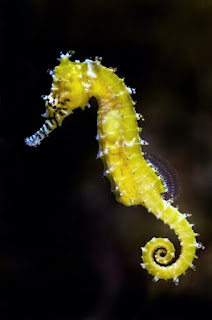The Surprising Seahorse and Backward Breeding
A spell back, I mentioned that Lisa Myworries from the Darwin Ranch took some time to visit the beach and bring back seashells and sand dollars. Roland Meadows and I were in town yesterday to get a few things. Lisa and other hands from the ranch arrived to get some supplies.
We talked for a while and I learned that she likes to do snorkeling, was amazed by the seahorse. She saw a few that had anchored themselves to objects by their tails, and wondered why these things are considered a kind of fish in the first place.
 |
| Seahorse, Unsplash / David Clode |
Ancient sailing lore tells of the dreaded hippocampus, or “horse sea monster.” When it raised its fearsome head above the waves, sailors recoiled in terror. The legendary beast’s namesake, a horrifying chimera with a horse’s head, a chameleon’s eyes, a lobster’s armor, and a monkey’s tail, still lurks in the oceans today. But sailors can sleep easy—the real hippocampus is only a few inches long.
As ugly as a horse-chameleon-lobster-monkeyfish might sound, this bizarre animal is not really a nightmare. On the contrary, we admire its grace and beauty, and we know it by a gentler name—seahorse.
You can read it all or listen to the audio by my favorite reader at "Magnificent Monsters."